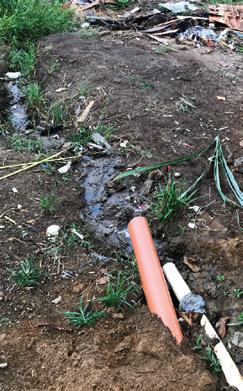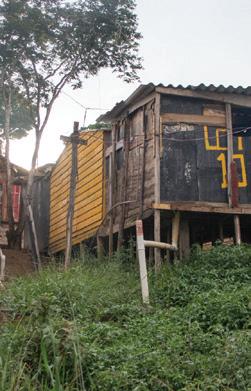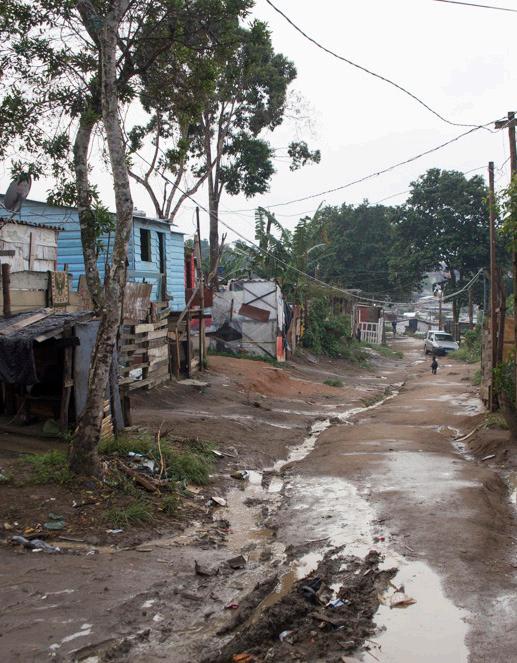
3 minute read
Problem Identification and Relevance
Infrastructure in Ocupação Anchieta is limited and lacking in many aspects. Drinking water and electricity are provided to most of the houses through illegal connections to the municipal system. There are also extremely poor street conditions, a range of sanitation infrastructure problems, and limited street lighting. The lack of an improved sanitation infrastructure is of particular concern due to the public and environmental health risk to the Occupation. Residents voiced their infrastructural concerns to Taubman Team and therefore infrastructure became a high priority and component of the action plan.
195 (previous image) Current Sewage Condition. 196 (left) Site Image Illustrating the Lack of Stormwater Management Options.
Ocupacão Anchieta (the Occupation) has a critical need for basic infrastructure revision and the improvement of current infrastructure. Infrastructure in the Occupation is completely informal. Almost all the electricity and drinking water networks and most of the sewage is gato, meaning they are connected illegally to the formal municipal network. Street infrastructure consists of an informal network of narrow and unpaved roads without sidewalks. Additionally, the Occupation has no systematic management for storm water. Other absent public infrastructure includes street lighting, waste facilities, and public space.
Each of these concerns pose specific problems for the public health and safety, quality of life, and resilience of residents. Most critically, the lack of complete sewage infrastructure is arguably one of the biggest problems for human health and the environment. Without every house being connected to a form of sewage or decentralized waste disposal process, the Occupation has increased risk of disease and a vastly decreased quality of life. Moreover, the lack of sewage infrastructure in Ocupacão Anchieta has environmental consequences for the City of São Paulo.
There is a set of natural springs that flow into a creek bed located in a lower elevation of the settlement. This creek drains directly into the larger watershed of São Paulo; ultimately to the Billings Reservoir, which is a highly polluted secondary source of water for the city (Schneider, 2015). Therefore, not only is the lack of sewage infrastructure negatively affecting human health in the settlement, it is polluting the wider ecosystem of the São Paulo Metropolitan Region.
The Occupation residents also voiced their concerns about the precarious street conditions. When it rains, unpaved streets become
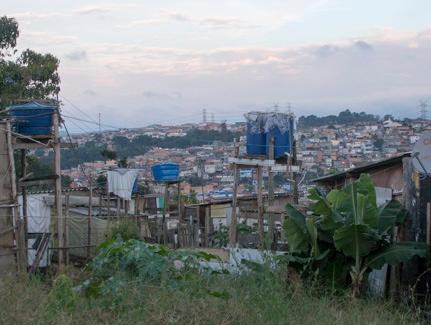
197 Water Tanks with Stored Municipal Water.

198 Example of Septic Tank Pipe. nearly impossible to traverse and cars very easily get stuck in the mud. The lack of storm water management exacerbates these problems associated with the mudding of roads and the lack of sewage infrastructure. Following urbanization patterns occurring globally, Occupation residents informally install basic electricity and drinking water infrastructure (Parkinson and Tayler, 2003).
The current sewage system in the Occupation is simple and to a certain degree centralized. There are different methods by which residents deal with their household sewage. As previously discussed, many houses are connected through the gato methodology. For sewage, this means individual households save up to install septic tanks and waste management professionals who live in the Occupation assist small groups of residents in hooking up their houses together. This creates a series of gradually larger septic tanks, which ultimately connect to the municipal system illegally. In this way, the Occupation’s infrastructure is not up to the city’s design standards but instead hooks up to the centralized system for dealing with wastewater. Other houses in the settlement are either connected to a septic tank without an outlet hole, a septic tank with an outlet hole that is not connected to a final destination, or not connected to any form of improved sewage at all. Currently, the infrastructure in the Occupation is primarily lacking because every house is not entirely connected to the municipal system. In some cases, houses are releasing sewage into the Occupation without any form of treatment.
199 (right) Existing Infrastructure Conditions.
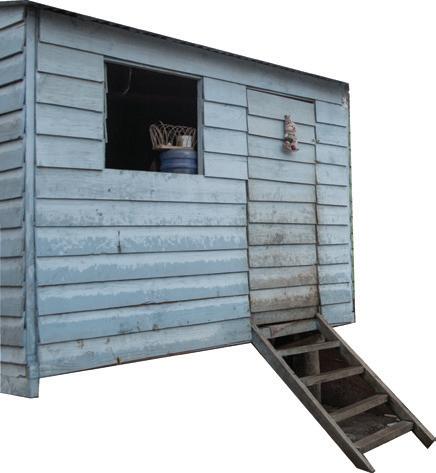

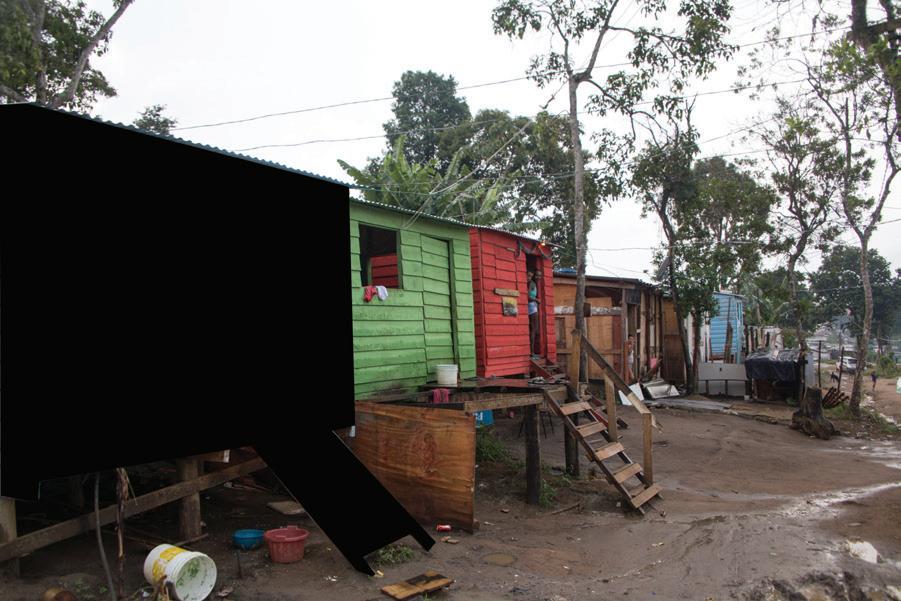
Direct Release Direct Release
Direct Release
Direct Release Septic Tank Direct Release Direct Release Septic Tank Septic Tank (No Outlet) (No Outlet) (No Outlet) Septic Tank Septic Tank Municipal Septic Tank Municipal System Municipal System System
